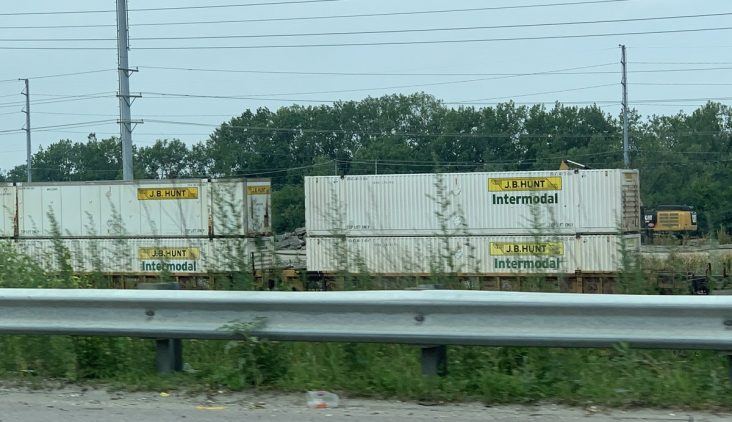Shippers see recession as ‘best case’ for rail service recovery, analysts say
by August 30, 2022 3:01 pm 1,238 views

U.S. shippers don’t expect rail service to recover to pre-pandemic levels until at least the second half of 2023 as shippers plan for a recession, according to a recent survey.
In an industry note, analyst Justin Long and associate Brady Lierz, both of Little Rock-based Stephens Inc., released the results of a rail shipper survey that shows that multiple shippers said a decrease in demand, or a recession, might be “the best-case scenario for the rail service recovery.” The survey, which also shows more than half of shippers have been planning for a recession, included respondents that collectively manage more than $25 billion in annual transportation spending, and nearly all are focused on the general merchandise sector.
According to the analysts, the most notable change since the January survey was a decline in service in the West. Two-thirds of shippers don’t expect a return to pre-pandemic service levels until the second half of 2023 “or beyond,” the analysts said. “But when this occurs, there is a significant amount of pent-up demand for truck-to-rail conversions.”
For 2023, the analysts expect rail volumes to rise in the low-single digits and for rail pricing to increase in the mid-single digits. On average, shippers expect 2023 rail volumes to rise by 2%, from 2022. According to the survey, 43% of shippers expect volume growth, 32% expect flat volumes and one-quarter expect volumes to fall. Meanwhile, rail pricing is expected to rise by 5.8%.
“Simply put, the pricing environment remains healthy despite the economic/freight market uncertainties,” the analysts said. “And in our view, these increases are being supported by the rails’ efforts to offset a higher level of inflationary costs. On that point, as part of the ongoing rail/union negotiations, the Presidential Emergency Board (PEB) recently announced its recommendation for a cumulative wage increase of 22% over a five-year period (2020-24). This compares to the rail proposal of +16% and the union proposal of +28%. We believe it is likely these negotiations are settled in the weeks ahead and see a low probability of a labor strike.”
According to a recent FreightWaves article, three railroad unions have reached tentative agreements with U.S. railroads on a new labor contract. The deal would include a 24% wage increase over the five years (2020-24). The three unions represent more than 15,000 rail employees or about 11% of those at the bargaining table.
According to the survey, shippers gave existing rail service an average rank of 5.1, with 1 being poor and 10 being strong. This is down from the 5.9 rank at the start of the year. Kansas City Southern received the highest ranking of 6, while BNSF Railway Co. had the lowest ranking at 4.2.
Analysts said the most notable change was a decline in the rankings for western rail service, with BNSF down 2.8 points, and Union Pacific Corp. down 1.5 points, compared to the survey at the start of the year. The western rail service issues are likely to impact volumes for railroads and intermodal carriers, such as Lowell-based J.B. Hunt Transport Services Inc. The intermodal segment comprised 57% of the carrier’s total operating income in the second quarter.
In March, J.B. Hunt and BNSF announced a joint initiative to improve intermodal service. J.B. Hunt plans to increase its intermodal fleet by more than 40% to as many as 150,000 containers in three to five years. BNSF is expected to increase capability at multiple intermodal facilities and provide several properties around key intermodal hubs to increase terminal efficiency. This year, BNSF plans to add about 1,200 well cars that can carry nearly 2,500 containers.
If rail service were to return to pre-pandemic levels, 68% of survey respondents would shift their freight from truck to rail. On average, this would lead to a nearly 15% increase in these shippers’ rail volumes, according to the analysts.
“We continue to believe shippers will need to see a sustained period of better rail service before shifting a meaningful amount of freight from truck-to-rail,” the analysts said. “This would suggest the ‘pent-up demand’ is significant.”
From 2021 to 2022, 64% of shippers didn’t change their mode of transportation, while 18% of shippers shifted freight from truck to rail, and the remainder shifted freight from rail to truck. As a result, the analysts said the net impact has been minimal.
According to the Association of American Railroads, through the first 33 weeks of 2022, U.S. rail volumes declined by 0.01% from the same period last year, while intermodal volumes fell by 5.5%. Combined rail traffic in the United States has decreased by 3%, from the same period last year.
